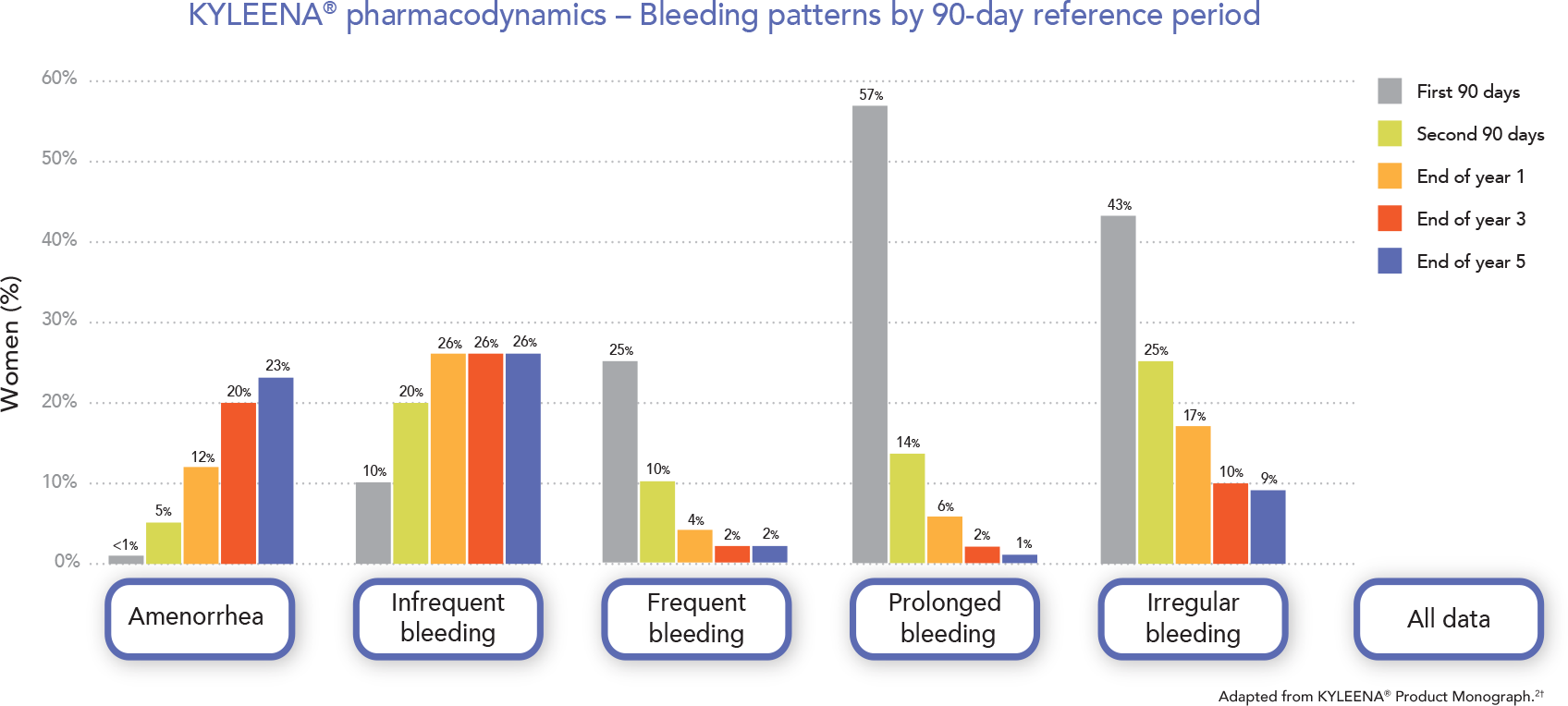In most women, there is a trend over time towards less frequent and shorter episodes of bleeding2*


During the first 3–6 months of KYLEENA® use, the number of bleeding and spotting days may be higher and bleeding patterns may be irregular.
The duration and volume of menstrual bleeding increases initially; with continued use, bleeding patterns vary from regular menstruation in some women, to irregular or prolonged bleeding in other women, and amenorrhea in others.†
Because irregular bleeding is common during the first months of therapy with all IUSs, including KYLEENA®, it is recommended to exclude endometrial pathology before insertion of KYLEENA®. It is also important to counsel women about how their bleeding pattern may change after insertion of KYLEENA®. The instructions for insertion should be followed carefully. The patient should be re-examined 4 to 12 weeks after insertion and once a year thereafter, or more frequently if clinically indicated. Irregular bleeding patterns in users of KYLEENA® could mask the signs and symptoms of cervical or endometrial cancer. If bleeding irregularities develop after prolonged use, appropriate diagnostic measures should be undertaken. Patients should be appropriately counseled on the likelihood of changes in menstrual patterns.
Bleeding pattern definitions: amenorrhea (no bleeding or spotting throughout a 90-day reference period), infrequent bleeding (occurrence of 1 or 2 bleeding/spotting episodes per 90 day reference period), frequent bleeding (occurrence of more than 5 bleeding/spotting episodes per 90 day reference period), prolonged bleeding (occurrence of bleeding/spotting episodes lasting more than 14 days per 90 day reference period), irregular bleeding (occurrence of 3 to 5 bleeding/spotting episodes and less than 3 bleeding/spotting-free intervals of 14 days or more per 90 day reference period). Subjects with prolonged bleeding may also be included in one of the other categories (excl. amenorrhea).
* Clinical significance has not been established.
† Menstrual bleeding patterns were recorded by all women throughout their participation in clinical trials with KYLEENA®, starting from the day of insertion. Menstrual bleeding patterns were assessed using the WHO 90-day reference period method. Data reported for each reference period reflect the number of women actually enrolled in trials during that specific reference period and for whom valid bleeding diaries were returned.2,5






